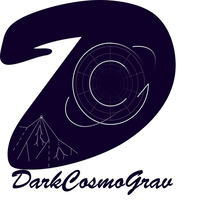Speaker
Description
We introduce a quantum scenario for a non-singular Bianchi I model in the Wheeler-DeWitt approach, in order to go beyond the pure semiclassical description
of the bouncing dynamics that can be lacking in many relevant cosmological models near the singularity. First of all, we study the Bianchi I wave packet
by adopting the isotropic Misner variable as an internal clock and we show its spreading behavior towards the singularity, with the consequence that the
semiclassical description of the cosmological dynamics loses its predictability in the Planckian region. Also, we highlight the isomorphism between the
Wheeler-DeWitt equation in this particular Minisuperspace and the Klein-Gordon one for a relativistic scalar field. This comparison allows to identify the
positive and negative frequency solutions with the collapsing and expanding Universe respectively. Then, we consider an ekpyrotic phase in the primordial
Bianchi I evolutin and compute the transition amplitude from a collapsing to an expanding Universe, thanks to the standard techniques of the relativistic
scattering theory. Actually, the ekpyrotic-like matter component mimics a time-dependent potential term and breaks the frequency separation, making it
possible for a quantum resolution of the initial singularity in the Wheleer-DeWitt framework from a probabilistic point of view. In particular, the
probability density associated to this \textquotedblleft Quantum Big Bounce\textquotedblright results to be well-defined in the mean values of the momenta
conjugate to the anisotropies and peaked when their mean values in the collapsing Universe are close enough to the corresponding ones in the expanding
solution, depending on the variances of the in-going and out-going Universe wave packets. This relation between the pre-Bounce and post-Bounce mean values
in the transition probability reflects the behavior of the typical bouncing solution, which symmetrically reconnect the two singular branches at a
semiclassical level.
Faculty position
PhD student
| Topic Field | Cosmology |
|---|

